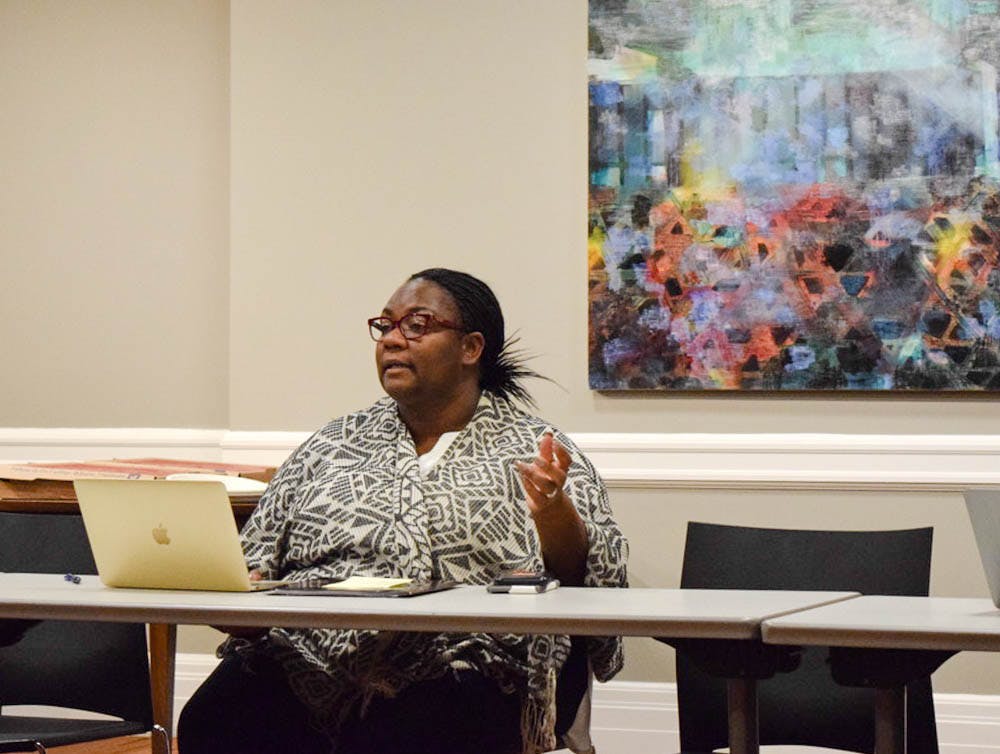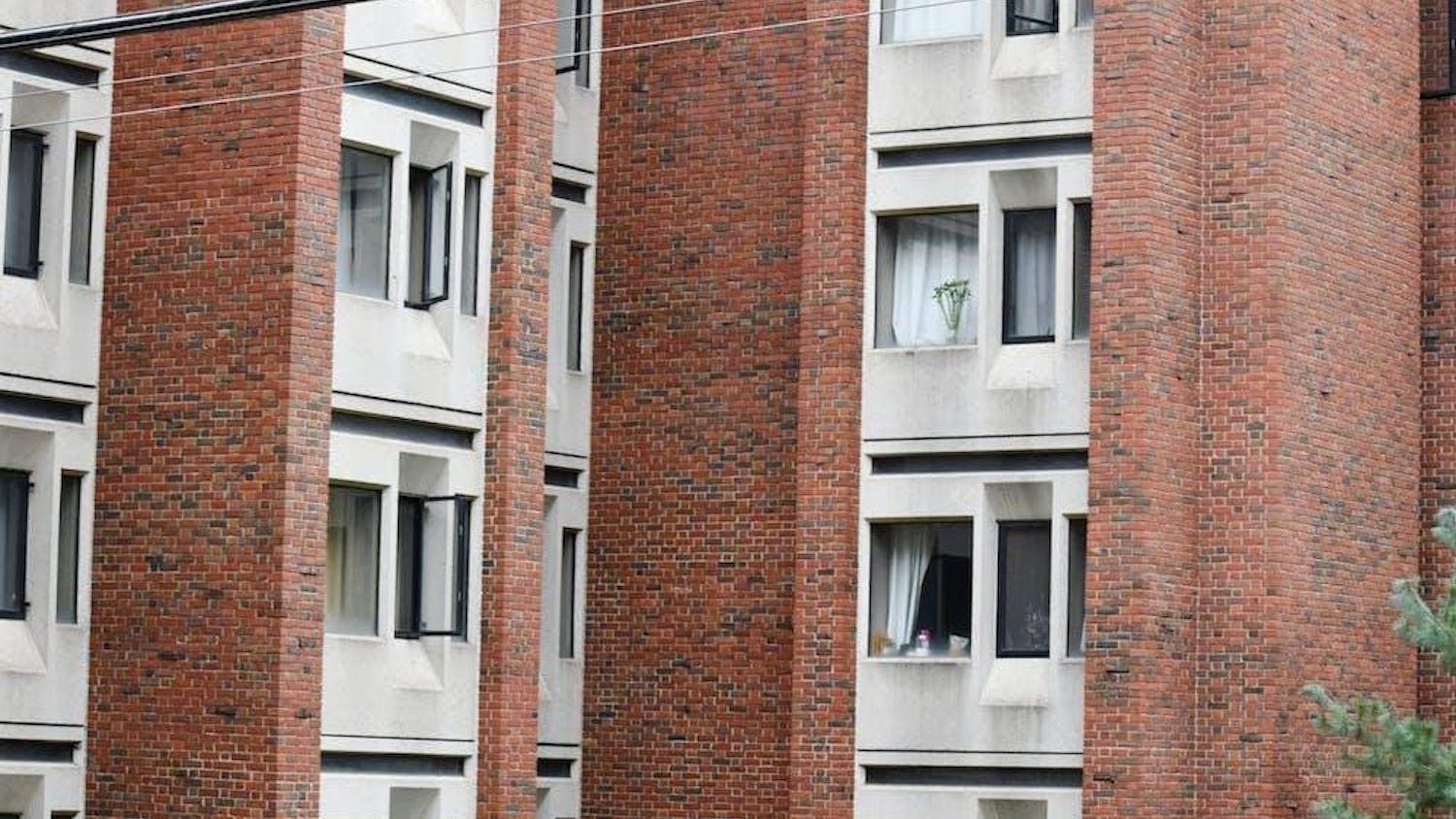A new bias incident reporting form will be released by the Office of Institutional Equity and Diversity in mid-March, following over two years of work by the OIED and the Undergraduate Council of Students, according to Shontay Delalue, vice president for institutional equity and diversity.
The reporting form will be available for online submission by students, faculty and staff.
The new reporting system’s goals include tracking trends of bias on campus through an annual bias incident report and “immediately connect(ing) those filing reports to the appropriate campus resources,” Delalue said.
“We felt it critically important that there be one repository that would help inform us from an educational lens and track themes of what’s happening on campus,” Delalue said.
Before the form, community members wishing to report bias incidents could contact the OIED by phone or email to voice their concerns, but the University had no organized process for reporting instances of bias on campus, said Shay Collins, director of institutional equity and community engagement. “It’s not as if (a reporting process) didn’t exist, but it just wasn’t as streamlined as being able to go through an online form,” they said.
As opposed to instances of bias — defined by the OIED as “favoring of or against one person, group or thing compared with another, usually in a way considered to be unfair” — instances of discrimination and harassment already have a formal process that can begin through a form. The new bias reporting system will allow complainants to report “hurtful acts that could rise to level of discrimination and harassment” but may not necessarily reach that level of extremity, Delalue said. Additionally, bias incidents do not need to be unlawful or break any University policies. “If it’s a hurtful act and that’s how it’s seen by a person, then they may file a bias incident report,” she added.
The University will run the bias reporting system through Maxient, a software platform currently in use by the Office of Student Conduct, Collins said. The software service will give the OIED the ability to both maintain and analyze data securely. Maxient “allows us to do reporting through online forms that are securely housed in sites that have gone through the highest level of security clearance through (Computing and Informational Services),” they said.
Maxient’s data and analytics will be critical to the success of the new reporting system, Delalue said. The OIED plans to create annual, aggregate, de-identified reports that will allow the University to follow trends and themes of bias on campus.
“It will allow us to put a snapshot together of what’s happening” and “how the campus climate is being impacted,” Collins said.
Still, the annual report will keep the identities of complainants completely confidential. “We know from engaging with other institutions who have done this work that people have to trust the process. We want individuals in this community to know we will never publish something that would very clearly identify who said it, because we’re still building in terms of compositional diversity,” Delalue said.
In conjunction with the annual report, the design of the new system will allow the University to put complainants in contact with the appropriate campus resources, Delalue said. “If we have a certain subset of our community that is experiencing hurtful acts at an abnormal rate, we want to make sure that they are connected to resources,” she said.
Complainants will also be able to indicate on the form that they do not wish to engage with University resources, Delalue said. The new system “is really a gateway for some people” to be put in contact with the appropriate University resources, “but for others it’s just for informational purposes, ” she added.
Once the form is submitted, the individual will immediately receive a written notification via email acknowledging the receipt of the form. From there, a bias review team, headed by Collins, will review the report to “determine what available additional resources and educational responses might be necessary,” Collins said.
If the impact of a particular incident is significant, Collins or another member of the team will meet with the complainant to discuss possible steps toward resolution. In this process, the OIED will consider the complainant’s desired outcome, which is specified on the form. If needed, the OIED may recommend that the complainant file a formal complaint of discrimination and harassment, Collins added.
Rather than replacing any other adjudication processes that exist, the new bias reporting system is meant to put the complainant in contact with the recommended resources, such as the Office of Student Conduct or Title IX coordinators, Delalue said.
“Student voice was critical” in starting discussions about a new bias reporting form, Delalue said. Those discussions were led by former Undergraduate Council of Students president Chelse-Amoy Steele ’18, who began working with the OIED on the project in fall 2017, alongside other students, The Herald previously reported.
Since those initial talks, Collins has worked alongside UCS to develop a bias reporting system that would encompass best practices in the area of bias reporting.
As part of the research that went into developing the bias reporting system, Collins attended the Hate/Bias Symposium sponsored by the University of Wisconsin - Madison. At the event, they were able to collaborate “with folks who have been doing bias work for a significant amount of time and have been navigating different issues,” Collins said.
The symposium also enabled Collins to examine the bias incident protocols used at other institutions. Some aspects of the University’s bias incident form were modeled off programs at University of Wisconsin - La Crosse, University of Michigan, Emory University and Cornell.
Additionally, Collins received feedback from various University student constituent groups across the undergraduate, graduate and medical school levels, including the Graduate Student Council and the Diversity Advisory Board. Collins also solicited views from University faculty and staff groups.
The release of the form by mid-March represents the culmination of over two years of work by the OIED and UCS. This process “entails a whole lot of intentional work. We’ve invested a lot of time to ensure that we do this right,” Delalue said.
“UCS is very excited for its launch, and looks forward to continued collaboration with OIED to ensure its successful implementation,” wrote Tahir Shanze ’19, UCS president, in an email to The Herald.





